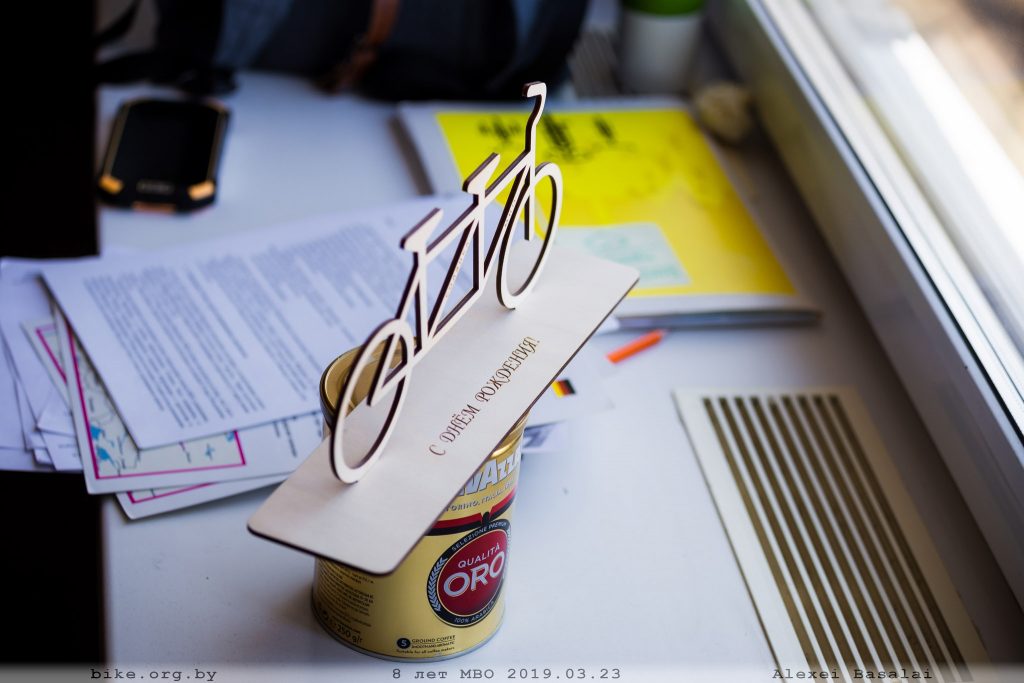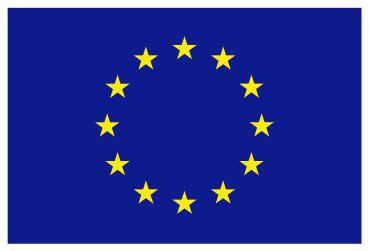This year, the modern bicycle model will be exactly 155 years since the invention. Then in 1864 the English inventor John Starley turned a person's idea of the possibilities of movement on two-wheeled vehicles. Today we recall how it was, as well as the most significant and curious facts in the entire history of its existence.
Speaking of a modern model, we mean the so-called safe bicycle, that is, the first instance in history with the same wheel diameter as we know it. Before that, the streets were ridden mainly on penny-farthing - bicycles with huge front and small rear wheels.
As for the chain drive, Starley modified the prototype that already existed at that time. In 1839 (by the way, another important anniversary for cycling enthusiasts) a Scottish blacksmith Kirkpatrick McMillan created the first bicycle in history with a chain and pedals. It was not easy to operate such a structure, because they were located on the front wheel and they did not have to be twisted, but moved back and forth like levers. However, this inconspicuous analogue at the time, helped Starley to develop a more perfect mechanism.
Despite the simplicity of the design (then it was nothing more than just two wheels, two pedals, a chain and a crossbar), the bicycle appeared later than many other more complex inventions.
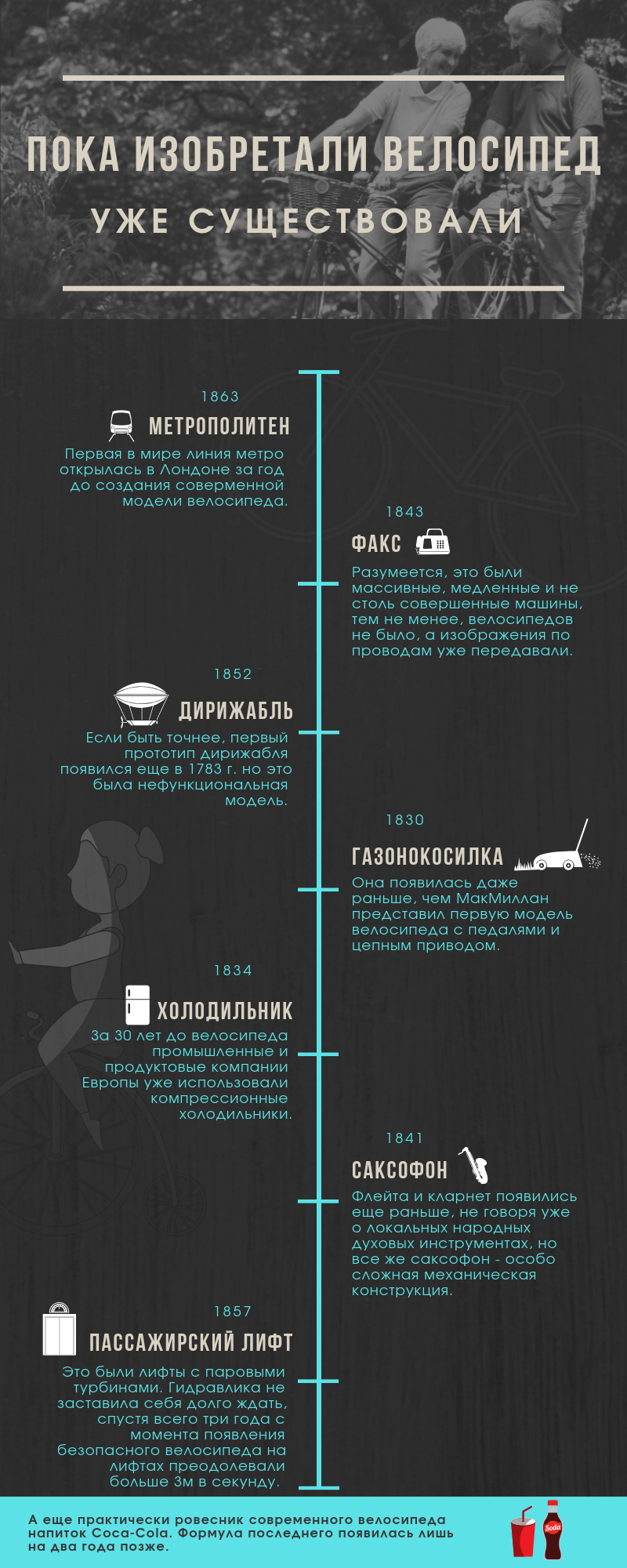
Interesting geography of bicycles
Europe is an irreplaceable and unattainable leader in terms of daily use of bicycles. However, the situation is with the "bye" clause. If any of the regions of the world decides to take over the palm, everyone will only benefit from this. The volume of bicycle production and the congestion of city tracks are growing every year. Ultimately, this will increasingly hint at the bicycle as an effective and inexpensive means of overcoming collapse.
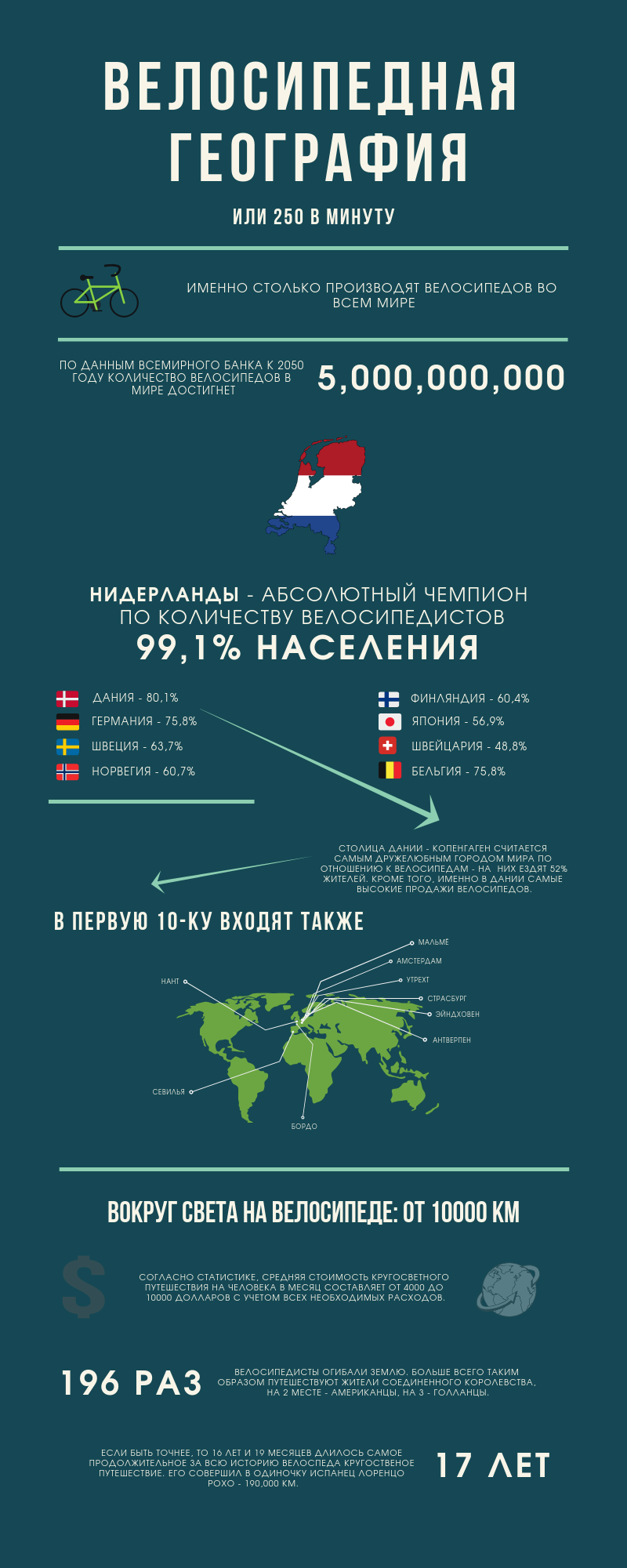
The economic and social importance of the bicycle
The more bicycles on city roads, the stronger the economy. The circuit is pretty simple. According to the latest large-scale study from 2011 across the entire EU (we refer to the countries of the European Union, because this is where bicycles became an element of the economy), the annual income from business activities related to the production, maintenance of bicycles, as well as the provision of services to the cyclists themselves, amounted to 18 billion euros. In comparison, this is 40% of the total EU tourism revenue. This business does not depend on fuel prices, is not subject to fluctuations and does not require colossal investments, therefore, it provides stable jobs and forms a high-quality commercial infrastructure.
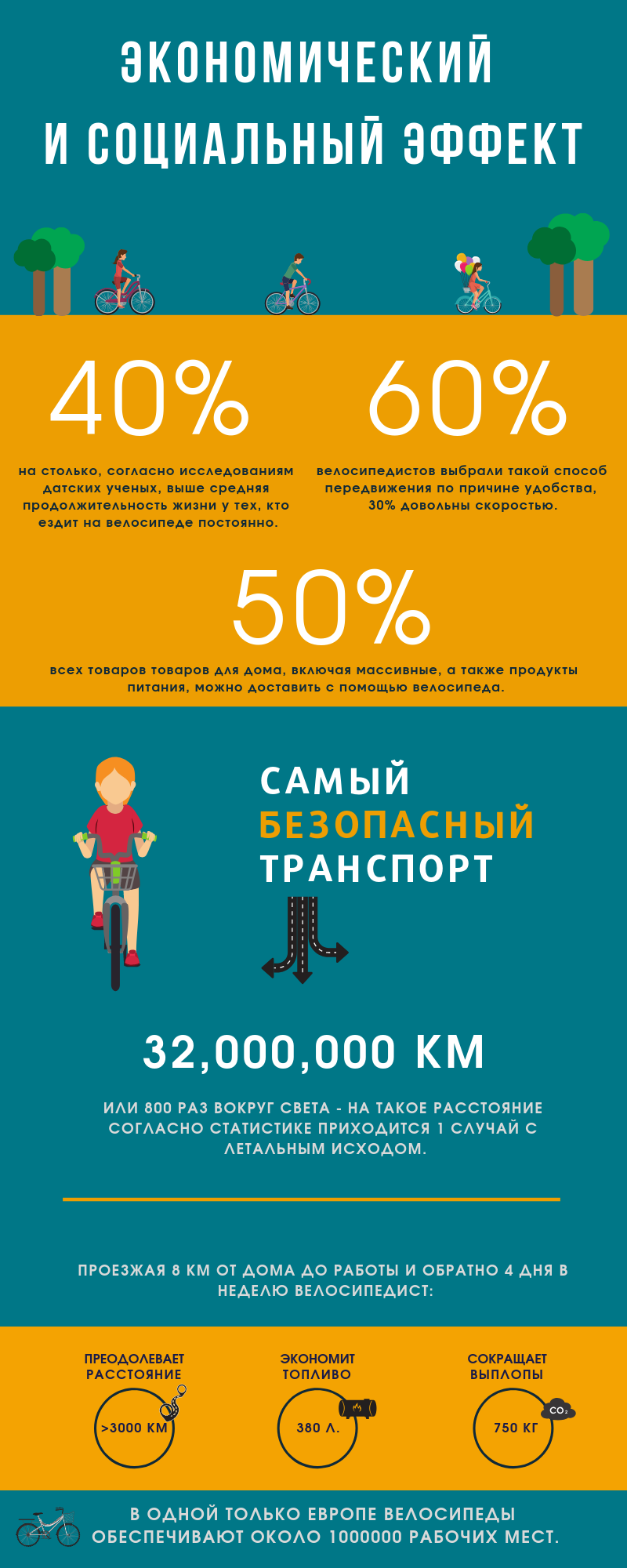
I twist, twirl, I want to be healthier
If we compare cycling with a storm, then its current scale in the context of not individual cities and countries, but entire continents is still a stage of calm. However, cyclists have made colossal advances in the past ten years. This prompted the start of numerous studies on the impact of cycling on the health of not only individuals, but also nations as a whole. For example, in 2013, the European Cycling Federation released shocking numbers on the expected positive effects of cycling in the EU 2028. The total amount of economic benefits will be 513.19 billion euros. More than 37% of this amount - due to the reduction in treatment costs.

Reducing the forced spending on health care means freeing up budget funds and channeling them towards solving other social issues. The total (513 billion) per capita in the European Union means an additional 1,000 euros per inhabitant per year. And these are indicators calculated taking into account the current pace of development of urban cycling. The more intense they are, the higher the expected rate will be.
Time to change your mindset
In developing countries, many people mistakenly believe that cycling is a sign of failure and lack of status. No one has ever argued and will never claim that a bicycle is a transport panacea, but giving it up completely does not mean raising your status, quite the opposite. Successful people are successful because they choose what makes them healthier, stronger, and more independent.
Last year's meeting between the Danish Prime Minister and the French President, when the two leaders discussed serious issues while riding ordinary city bicycles in Copenhagen, became, perhaps, a real symbol of the status of cycling, as well as the use of bicycles as the main means of transportation.
Video of Macron and Rasmussen's trip:
Jennifer Aniston, Hugh Jackman, George Clooney, Pink, Barack Obama, Brad Pitt, Harrison Ford - this list of people who happily hop on their regular road bikes (not mountain bikes or sports bikes) to ride on business goes on for a long time.
Princess of the Netherlands Katarina Amalia rides a regular bike to school. Sneakers, jeans, windbreaker, plastic basket with the necessary things, and go. The Prime Minister of the same country also very often comes to work by bike. Parking right next to the entrance to the government building. Arnold SchwarzeneggerAs Governor of California, he traveled around London with the Prime Minister of Great Britain. There are many examples.
We wish you all a creative and fun cycling anniversary.
The material used data European Cycling Federation.
The material was prepared with the consulting support of the Minsk Cycling Society.
Infographics and text Canva.



